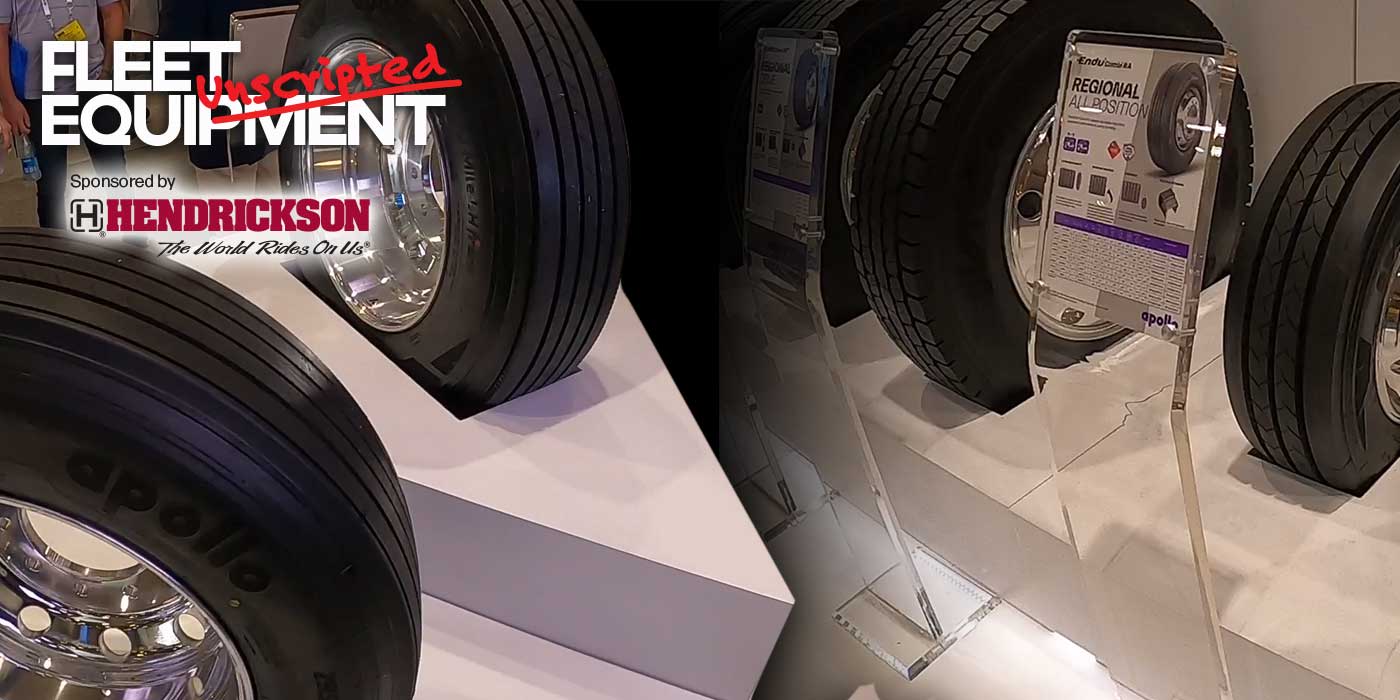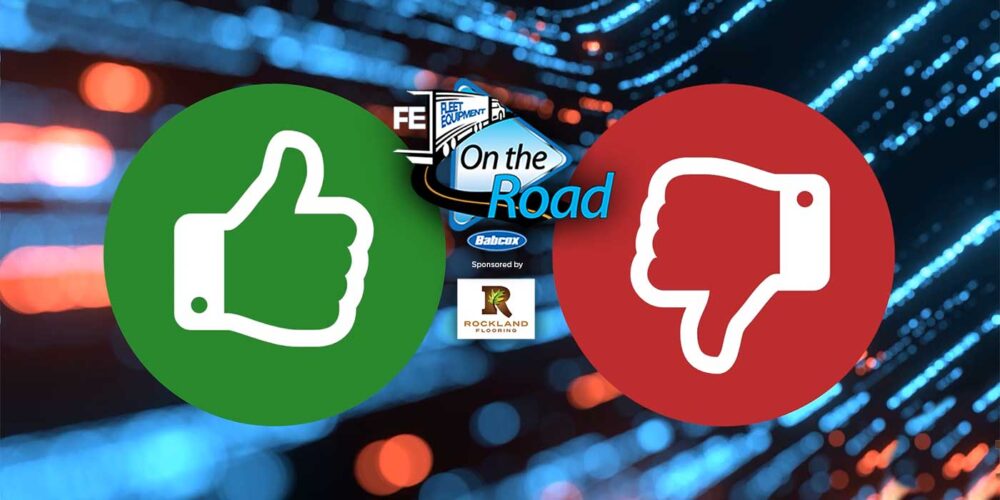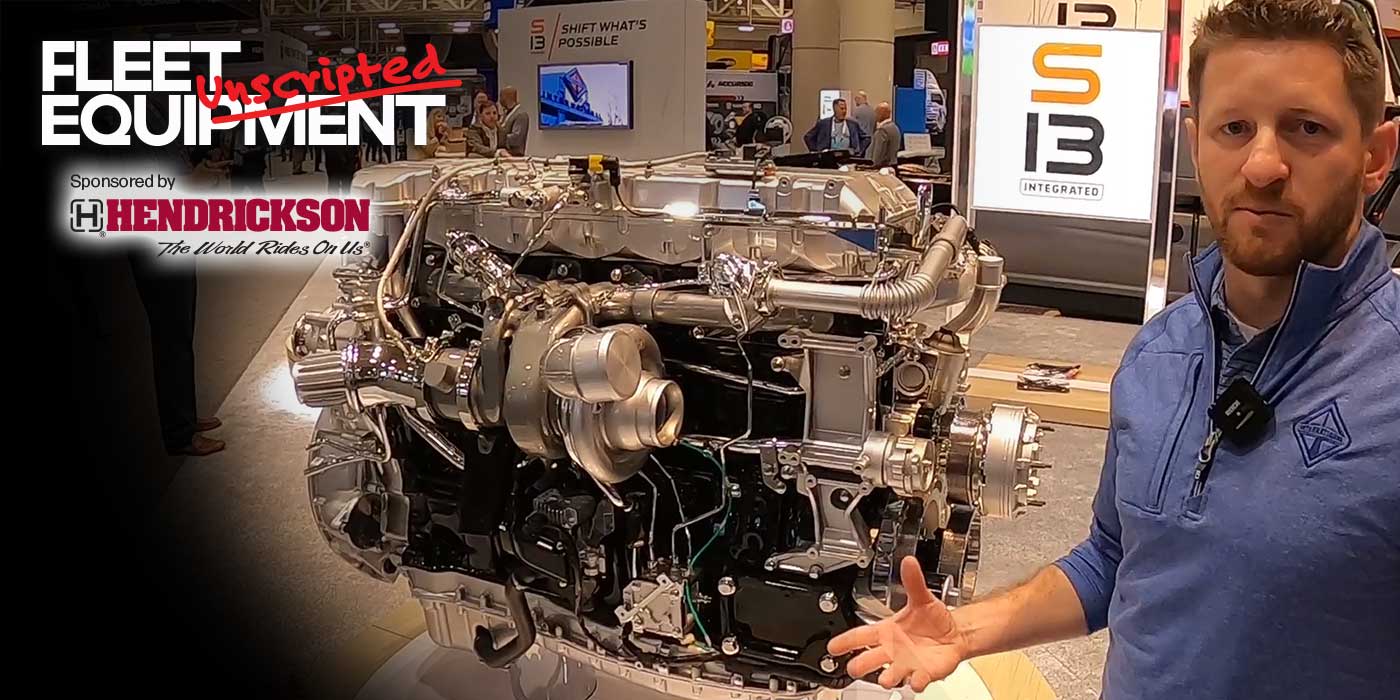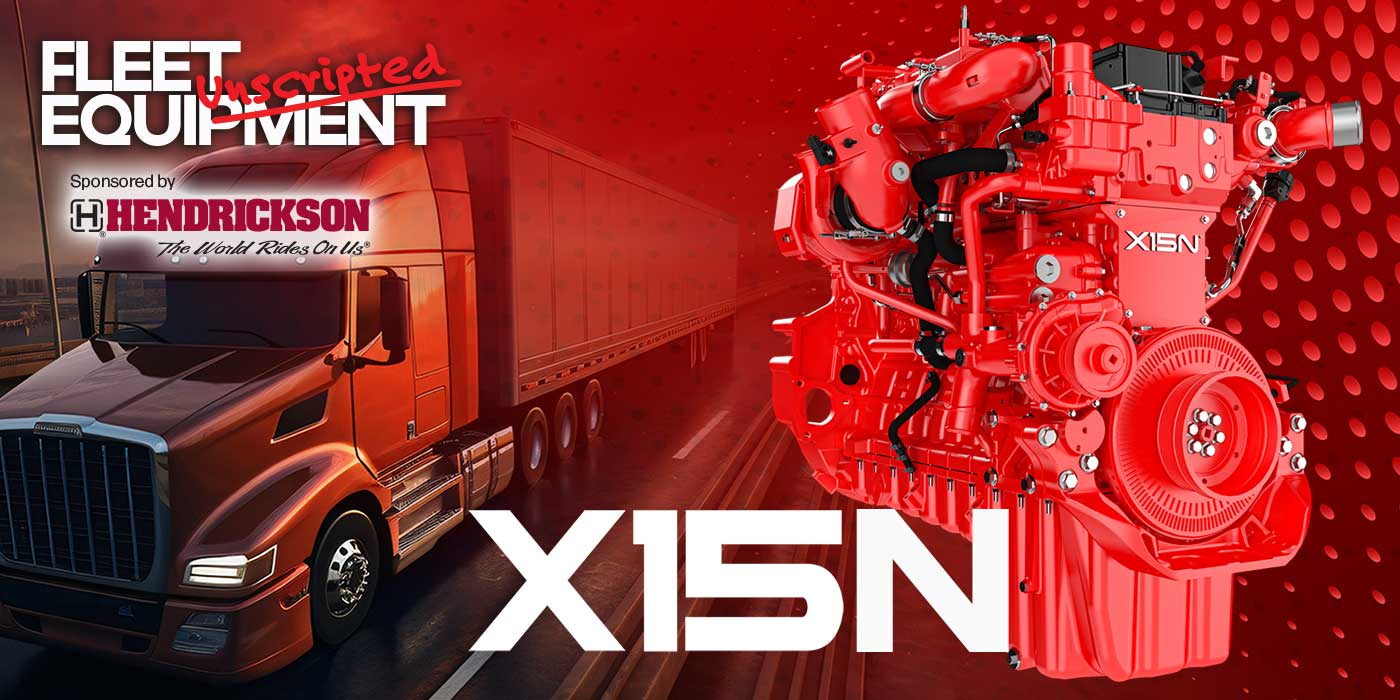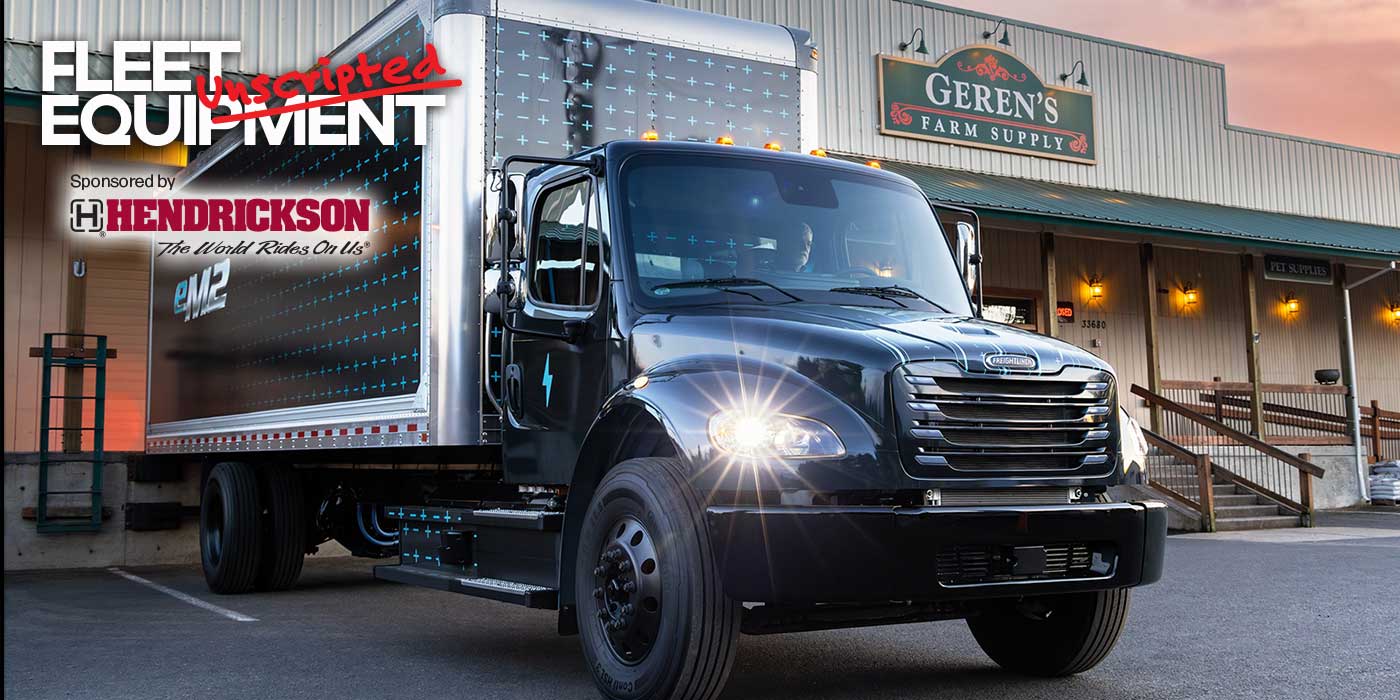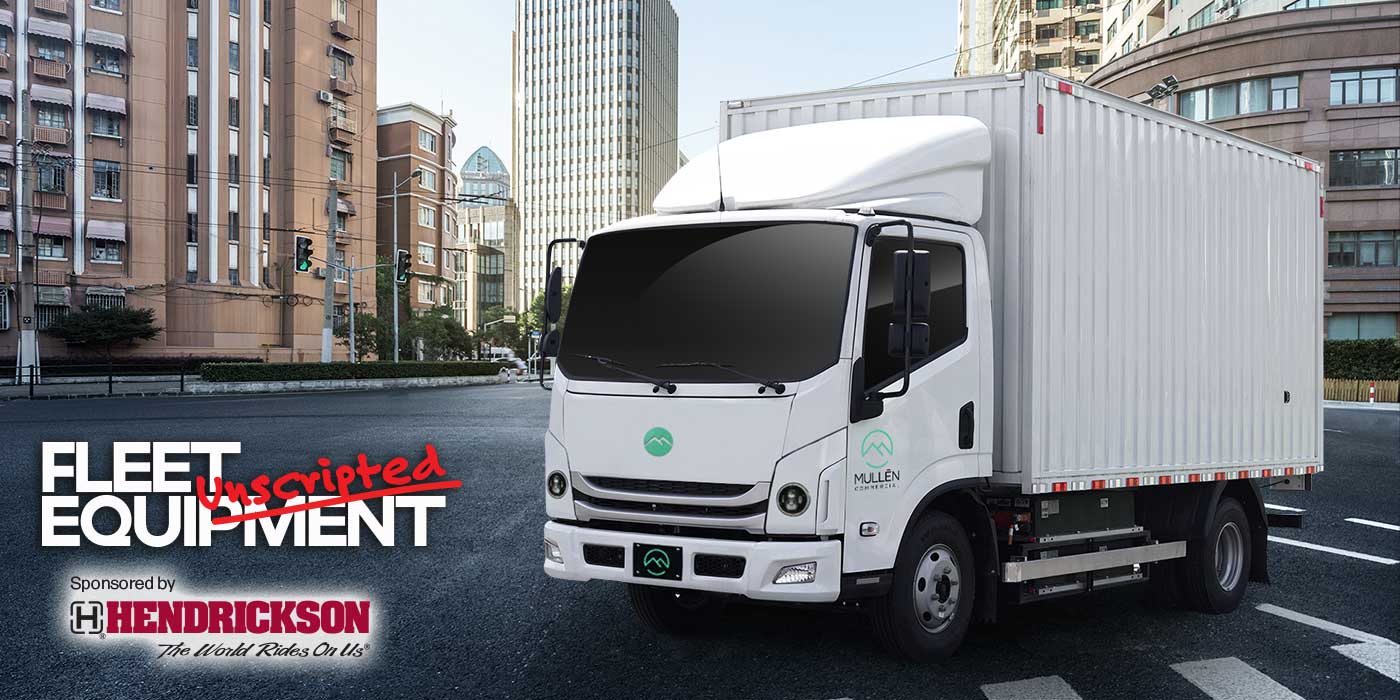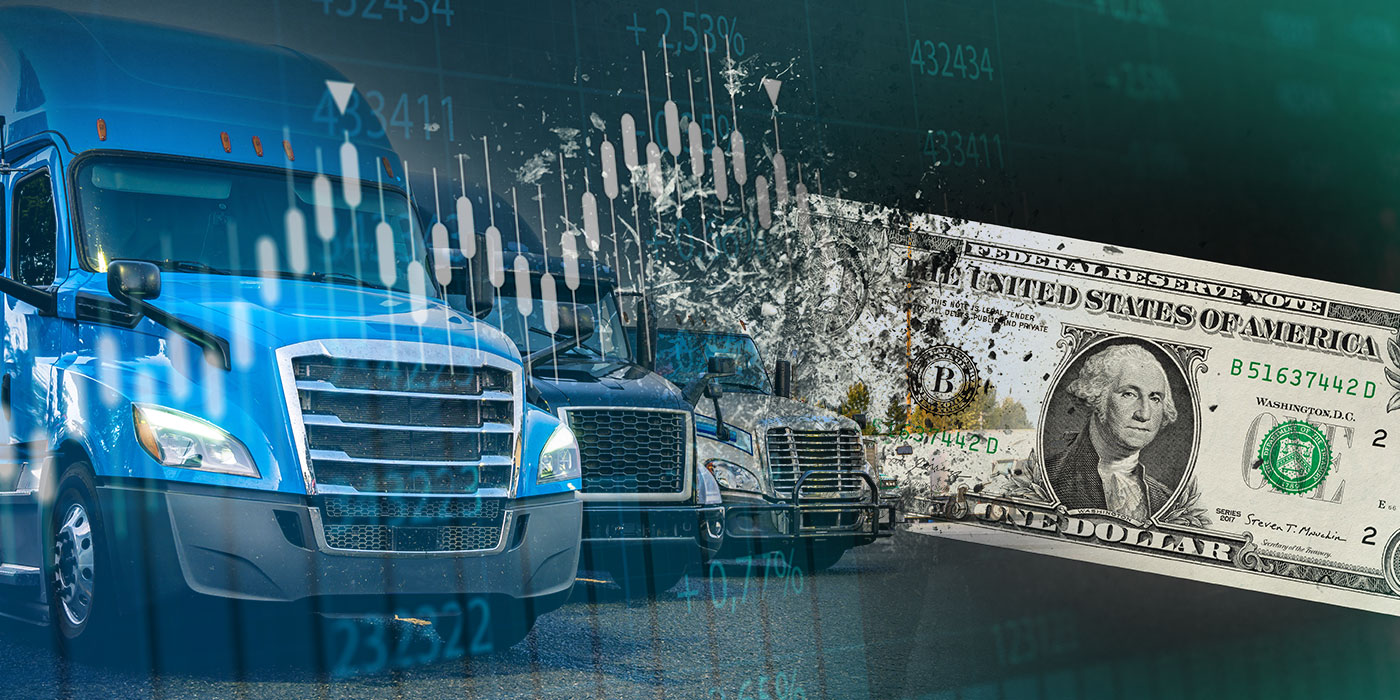Say, “Automated,” and the thought of self-driving trucks immediately comes to mind in the trucking world. That may grab headlines, but the idea of automating fleet operations goes beyond the yet-to-be available self-driving technology. Taking an automated approach to your workflow–from managing trucks to communicating to drivers to directing dispatch and dealing with loads–means putting the right information at your finger tips when you need it. not wasting time trying to track down the answers you need. And you can do that right now.
That’s according to Jacques DeLarochelliere, CEO, chairman, and co-founder of ISAAC Instruments, an ELD provider that holds a lion’s share of the market in Canada and is making in-roads in the U.S. Market. DeLarochelliere stopped by the Fleet Equipment studio to talk about the impact that automation within truck data and telematics can make. He also touches on everything from the rollout of the ELD mandate in Canada and the consequences for fleets with cross-boarder operations to the need for cybersecurity. Seriously, fleet managers, those threats are real. Watch the video above for all of his insight.

No script? No plan? No problem. Welcome to Fleet Equipment Unscripted—the video interview series that connects you with the greatest minds in the heavy-duty trucking world.
Bookmark the Fleet Equipment Unscripted page to catch all of our Unscripted episodes, and subscribe to our newsletter by clicking here to have the latest news and in-depth trucking stories delivered straight to your inbox.
Fleet Equipment Unscripted is sponsored by Hendrickson.
Here’s the transcript
Jason Morgan:
Hi, everyone. Welcome to Fleet Equipment Unscripted. I am Jason Morgan, Content Director of Fleet Equipment. And clearly we’re doing something a little different today. I have a special guest. Jacques, if you could introduce yourself.
Jacques DeLarochelliere:
Yes, I’m Jacques DeLarochelliere, CEO, chairman, co-founder of ISAAC Instruments.
Jason Morgan:
I appreciate that because what everybody didn’t see was me tripping over the last name for the last 20 minutes. So, I appreciate, it is wonderful to have you here. Thank you for taking the time.
Jacques DeLarochelliere:
My pleasure. It’s not too far from Cleveland, so it was a pleasure to do the drive and come and see you.
Jason Morgan:
That’s right. You’re going to settle an office here, and big provider in telematics and technology in Canada. So looking to make even bigger waves here in the US. Glad you could stop by and take the time.
Jacques DeLarochelliere:
Happy to.
Jason Morgan:
Let’s kind of dig into that because we are all hearing about the ELD certification process in Canada, a little more heavy lifting probably than on the US. And even in the US, it was a big deal to make that transition, right?
Jacques DeLarochelliere:
It was. Yes.
Jason Morgan:
And your ISAAC is certified. So congratulations on that, because that’s a big step. Can you kind of take me through where are you at in that process in Canada, rolling that out? And maybe what lessons from the US market and the roll out of ELD’s here are you able to bring over to fleets that are maybe crossing the border or even just working into Canada?
Jacques DeLarochelliere:
Yes. Well, big lessons. We have to know that Canadian fleets go across the border a lot. So it’s not new because it’s been almost more than two years, as you know, in the US. So most fleets have had to go through the process because they drive in the US. So it’s not that much of a, lessons learned for the change. Most of them did the change already.
Jacques DeLarochelliere:
So, yeah. And certification, as you pointed out, was the difference, so very similar rules and all of that. In the US, it was a self registration. So you have to just put your name on the table and make sure that you can send the hours of service to the FMCSA. In Canada that’s different. We needed to go through a very tedious and scrupulous process with authorities, a third party that was certified to do that. There’s now three third parties to do the certification. Now, 22 to this day systems certified. Of course, we were part of the first wave, all the way back in midyear last year. Still seeing some names getting added. So, it’s good. I think that we have roughly 90% of coverage because the top seven providers cover roughly 100% of the market. There’s one that’s not there yet. I think we’re going to be covered in due time in terms of coverage for the industry. So, that’s a great thing.
Jason Morgan:
Nice. Yeah. And I know that they’re doing kind of a progressive enforcement as they roll out because one of the things we even saw in the US side is like, “Oh, it’s great. You can flip the switch.” Everyone, even we’re self registered, so there was even less hurdles to jump through. But then the communication between the driver and law enforcement and being able to provide logs out there to law enforcement out on the road, it’s more of a people management thing in that way.
Jacques DeLarochelliere:
And law enforcement being ready to basically enforce it, to have on the side of the road, have the people ready to do that. And also large providers were not ready. So they had to expand a little bit, a couple of months. This shouldn’t be the case in Canada and there’s different provinces and they’re not going to be ready at the same time also. So this is all the way under discussion. It was supposed to be June 12th 2021. It was postponed to June 12 2022. But some provinces have said that they’re going to be applying it in 2022. Some others say, “We might not be ready.” The big one is Ontario, it’s half the market in Canada basically. And if you have a trucking fleet and you don’t go across Ontario in Canada, you’re not going anywhere basically. So it’s going to be pretty much everyone needs to be compliant by June 12 2022.
Jason Morgan:
Right. Right. I mean, and then you have the big job of just bringing people on board, making sure they’re comfortable with the system, knowing how they can access logs, knowing how they can share that information with law enforcement when they’re on the side of the road and just stressing to people like, “Hey, just maybe be a little patient with everybody.”
Jacques DeLarochelliere:
You should be there already. I mean, it takes a couple of months to get everybody ready. So, this is the time, right?
Jason Morgan:
Right.
Jacques DeLarochelliere:
There’s three months to go.
Jason Morgan:
Right. For sure. So, that was a big talking point at the user conference you had here this past fall, I believe was about the November timeframe. One of the other things that you talked a lot about was automation and that’s something we hear a lot about, buzzy in the industry, right? But you equated it to maybe how it could help the labor shortage. And labor shortage, it’s getting a lot of headlines. It’s nothing new in trucking though. Everybody’s like, “Welcome to the party, rest of the world. We’ve had like a shortage of everybody for-“
Jacques DeLarochelliere:
Other industries.
Jason Morgan:
Right. Can you kind of walk me through on kind of a grassroots level, what does automation mean in terms of helping reduce the labor needs and how can it help fleets right now?
Jacques DeLarochelliere:
Our perspective is we are very driver-centric technology in the cab, but everything you do, or don’t do, in the cab is going to have effects on people working on the backend, basically back at the office. It’s important that we automate as much as possible. We have the information ready when he or she needs it as a driver, right? If he or she needs to find the information, they’re going to just push the work to somebody else. So there’s two areas here. There’s the, keep the wheels turning. Something we are very focused with our innovations and our product development is everybody’s happy when the wheels are turning. We need to keep the trucks moving. So if they stop, get them on the road as soon as possible. It’s all about automation. That’s where the driver is happy, but also the shipper, the consignee, everybody, the carrier.
Jacques DeLarochelliere:
Automation is about having the answers at the right time, not chasing the answers, because if you need to chase the answers, the drivers are not doing their job. They’re not going, they’re not moving. But also they’re pushing some of the work, the workload, to somebody else at the back office that needs to find the answer. So all of a sudden you need more people at the back office. And as much as you can’t find a cook anymore, you can’t find a waiter anymore, well, you can’t find a dispatch anymore. So this is got to be automated as much as possible. As much as we talk about autonomous driving, we should talk about autonomous dispatching and autonomous planning and autonomous maintenance and everything else.
Jason Morgan:
Right. Well, and what you’re alluding to there too, is the information that a specific job function needs at the fleet is different than the one that is sitting right next to him, right? The driver’s going to need different information than the technician’s going to need in the bay. And it’s all available. And this is what I’m finding more and more is that we, and we talked about it a little bit about it even before the camera’s were rolling, just about how much technology is people using the systems, and getting that information to them and communicating. And, I mean, I don’t even envy the situation you’re in to try to deliver all that.
Jacques DeLarochelliere:
And there’s many systems to connect to. So, we gather a lot of data. It’s our trademark. We have a multiple of the other systems. And because we have so much information, we have the responsibility to push it. We don’t want people to pull on the information to get it when they need it. We need to push it at the right time at the right individuals in the company. It’s about this dispatching this information through API’s that are flexible enough, with a team that we have to support the integrations with all kinds of systems, accounting, maintenance, dispatch. There’s so many systems that need the information. We’re the source. We’re at the very source of the information. It’s our responsibility to dispatch the information in a timely manner to those who might need it. So, that’s the way we do it.
Jason Morgan:
So, if I’m a fleet and I want to do this with my… I mean, I’ve got a responsibility to tell you where I need that to go, right? I mean, are there any tips or guidance? Like what questions do you need from me to come to you and say, “Hey, can you get X to Y or Z?” What do you need from me?
Jacques DeLarochelliere:
Well, been there, done that. We have more than 500 fleets and I’m not talking owner-operators, fleets of trucks operating our system. So we’ve been through this process quite a few times. The checklist and the questions that you need to answer before we get going to manage change, because there’s going to be change, but also to make sure that we leverage this data, this gold mine of data, as much as possible. And, actually, it feeds automation. So you need to automate and get the answers. All of the workflow that we have developed around the driver’s work is getting the answer at the right time. They barely see their log book. They don’t need to see their log book because they’re doing things that we have aligned, and in fact our clients have aligned for them to do in a timely manner so it populates the log book altogether.
Jacques DeLarochelliere:
So, all of this concern of log book inspection and whatnot, it’s all in one center, but still leverages different apps through the ISAAC open platform. So we want to keep feeding this beast and have as much flexibility as possible, but make it very streamlined and automated for the driver so he or she does not chase the information. And it’s a lot of effort but it turns into less of a labor shortage because it’s all over the place. It’s in the shop for maintenance. If you push the right information at the right time, well, when the truck shows into the yard you’ll know what you need to do on it for it to keep the wheels turning as soon as possible.
Jason Morgan:
Right. And I think the key that I’m really gravitating toward to what you just said is, you will know what to do with it because, I mean, the technology, as we’re seeing, will do amazing things. You can connect to a lot of things but the people, we still got to do stuff. You mentioned change management.
Jacques DeLarochelliere:
Exactly.
Jason Morgan:
Yeah. People got to change. And that is, we see a lot of times right now and a lot of the conversation on the technology on the truck side is, yeah, we got to get the people to understand that this is important. This is what you do when you see the information. And that just comes from the… I mean that’s just back to basics people management, right?
Jacques DeLarochelliere:
Comes down to people all the time.
Jason Morgan:
So one of the other people component in terms of management and technology, that always interests me, and I know you’ve spoken to it before too, is the cybersecurity. During a time where we’re looking at the 3G sunsets here in the network, there also seems to be just kind of a natural movement of fleets, kind of looking at other services, other solutions out there in the market. What is the threat of cybersecurity and how do you work on your end, on the software and technology end that keep users safe?
Jacques DeLarochelliere:
And I like that you introduced it with people. So it starts and it ends with people basically. The way you want… So for one thing, the pandemic has had a multiplying factor on cybersecurity threats. That’s exploded over the last two years. Like somebody has leisure time to play around with computers, I don’t know. But really we’ve seen the number of attacks, the intensity of the attacks, has been significantly increased. And as you pointed out, it’s about the people. I know the users are the entry point of attacks. It’s difficult to just have systems to protect your company. You need the people to be trained and organized and otherwise the systems will… It’s always a compromise. It’s not all black and white or like when you configure a truck, it’s not all about the power or the weight. You need to have the right compromise.
Jacques DeLarochelliere:
So here, if you have the systems that will protect, well, your users won’t be able to do anything because they won’t be using the technology because you’ll be protecting the technology against the users, because the users are the entry point. At the other end, if you give them all the leisure, because, what’s called it, bring your own device or whatever phone you’re using, well now your driver, he or she, is the IT specialist of your company. So the least computer savvy of them will be your IT specialist in cybersecurity. Like a chain is not stronger than its weakest link, here we are.
Jacques DeLarochelliere:
You got to have the cursor placed at the right place. And you can have some cheats or some workarounds that we have tried to leverage as much as possible to give the possibility to have as much flexibility as possible, but still have a specialist at the right time to take some of the decisions, not leave the decisions to the users. We’ve worked a great deal on the remote assistance. It’s built into the system. At any point in time an IT specialist from the trucking company or a dispatcher, or whoever has the authority, can basically use the tablet in front of the driver from the remote location, from anywhere, and take some of the decisions. So you have the flexibility, but you give it, you put it in the hands of somebody who is a specialist. So you don’t click on the wrong links basically, right?
Jason Morgan:
No. I know that is the biggest battle.
Jacques DeLarochelliere:
We all got that email, that email that will make us a millionaire overnight because, you know.
Jason Morgan:
Yeah. I keep clicking all those. It hasn’t worked yet. I don’t know what I’m doing wrong.
Jacques DeLarochelliere:
Yes. Good luck with that.
Jason Morgan:
I guess I’ll keep clicking.
Jacques DeLarochelliere:
Give them your driver’s license number and your bank account, right?
Jason Morgan:
Yeah. Right. Yeah. Mother’s maiden name, I’ve sent all that over.
Jacques DeLarochelliere:
Call them now. So, you’ve got to find the right balance but it’s got to be built in the product so you have a workaround. But at the end of the day, it’s all about having the people protecting the system. The systems will do some of the work, but you still have, the weakest link is still the people. You’ve got to be mindful of that in building the product and it’s not sexy. It doesn’t sell telematics to have these systems built in. This is done behind the scenes but it provides a great deal of benefits to the companies who will never know because they never got attacked.
Jacques DeLarochelliere:
And I like Joe Russo, our IT VP says, it’s like if you compare it to hockey or soccer, any game with a goalie, while the goalie has got to win with a bleach all the time, you cannot give a single goal because you’re being attacked all the time. They can take as many shots as they want. And you got to stop them all. Their success is one shot that runs in and you failed. So it’s a lot and trucking is a target. It’s a juicy target for their cyber attacks.
Jason Morgan:
Right. Well, and you know, going back to the people angle and maybe what might sell telematics devices in your case here is knowing that, as a fleet, I need a partner that is on top of this because it’s always an evolving process. It’s not like I just buy something one day and I’m good for the rest of my life and I don’t have to worry about it. I need a partner that I can reach out to. And as you all are making a really big push into the US market just developing those relationships with fleets are key and working with them day in and day out.
Jacques DeLarochelliere:
And how close you’re working with your provider. So if there’s resellers and a whole distribution chain between, and you have your information that goes from end to end to end before it gets to the platform is a different story already. So how close you’re working with your vendor and is this vendor working with trucking companies or all kinds of different companies with all kinds of different challenge, therefore divides its attention towards the different types of cybersecurity threats you’ve got. So there’s many things. And what’s the process in their releases. If they’re releases got all of the checkpoints it needs to have, it’s not every day, it’s on a regular basis, so you get innovations. But the trade-off of innovation is also cybersecurity.
Jacques DeLarochelliere:
It’s all about flexibility, velocity, and security. It’s a balance and you can feel that. And I can talk for experience, we have systems providers. I know we have ERP and all kinds of systems. And we choose carefully because we know how it works being technology suppliers, where you have to have a process that’s well established on their releases, on their checkpoints on doing that, and on the flexibility they provide versus the checkpoints and the controls that you need to have to cover yourselves with systems as much as possible against your own people’s weakness. That’s what it is.
Jason Morgan:
I know, for sure.
Jacques DeLarochelliere:
We’re all weak at some point.
Jason Morgan:
Yep. Yep. Yep. I hear you. Okay. So one more thing for you. So what’s on the horizon for ISAAC. What should we be keeping an eye out for this year maybe in the US market?
Jacques DeLarochelliere:
Well, there’s a serious case for change in the industry. As you’ve probably read some press release, or published some press release, in your case-
Jason Morgan:
Yeah. We’re probably writing the story for sure.
Jacques DeLarochelliere:
We’ve got great US fleets coming on board joining. We have a major share in Canada, 28% of total market already. We look forward to contributing to more of these fleets and helping keeping the wheels turning, automating, and surviving, or thriving maybe, through that labor shortage that affects drivers, but everybody now in the companies that are carrying the goods.
Jason Morgan:
Yep. Nope. For sure. And I appreciate you taking the time to come visit our studio here. Hopefully we’ll get you in the studio again later this year. We’ll talk more.
Jacques DeLarochelliere:
Anytime. My pleasure. I’m just next door. Happy to do the short drive and come see you guys.
Jason Morgan:
Perfect. Excellent. Well, thank you so much.
Jacques DeLarochelliere:
Thanks for the time.
Jason Morgan:
And thank you all for tuning in. We’ll see you next time.




